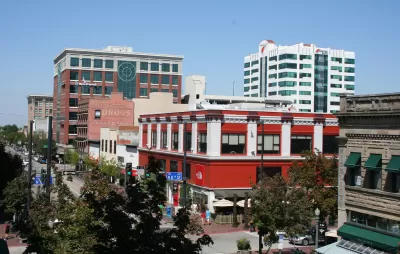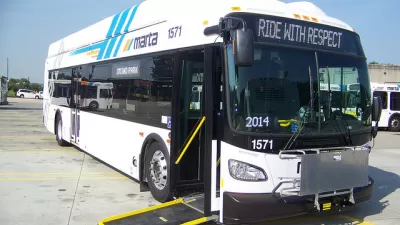A new circulator system for Downtown Boise, Idaho is in the works, with the mayor gently throwing his support behind a light rail system. But questions over costs remain.

A new circulator system planned to connect Downtown Boise with Boise State University is taking small but meaningful steps forward. Sven Berg of the Idaho Statesman reports that a stakeholder group made up of local business leaders, government officials, and others will make a formal recommendation next month on proposed routes and whether the system should use buses or light rail. While Boise's Mayor Dave Bieter supports a light rail system, the question of how to fund such a system remains outstanding.
The train would cost far more upfront — $111 million, compared to $23 million for new buses — and 50 percent more to operate, according to estimates put together with the help of an engineering consultant. But the same estimates predict the rail system would attract 300 more riders per day and induce long-term economic development worth close to $600 million.
While partial funding of a light rail system could be put together through grants and other city revenue sources, plans for a local-option tax to fund the transportation system have been blocked by the Idaho legislature. Creating the local-option tax would require a statewide ballot initiative.
FULL STORY: Bus or train? Downtown Boise circulator group close to suggestion

Maui's Vacation Rental Debate Turns Ugly
Verbal attacks, misinformation campaigns and fistfights plague a high-stakes debate to convert thousands of vacation rentals into long-term housing.

Planetizen Federal Action Tracker
A weekly monitor of how Trump’s orders and actions are impacting planners and planning in America.

In Urban Planning, AI Prompting Could be the New Design Thinking
Creativity has long been key to great urban design. What if we see AI as our new creative partner?

King County Supportive Housing Program Offers Hope for Unhoused Residents
The county is taking a ‘Housing First’ approach that prioritizes getting people into housing, then offering wraparound supportive services.

Researchers Use AI to Get Clearer Picture of US Housing
Analysts are using artificial intelligence to supercharge their research by allowing them to comb through data faster. Though these AI tools can be error prone, they save time and housing researchers are optimistic about the future.

Making Shared Micromobility More Inclusive
Cities and shared mobility system operators can do more to include people with disabilities in planning and operations, per a new report.
Urban Design for Planners 1: Software Tools
This six-course series explores essential urban design concepts using open source software and equips planners with the tools they need to participate fully in the urban design process.
Planning for Universal Design
Learn the tools for implementing Universal Design in planning regulations.
Appalachian Highlands Housing Partners
Gallatin County Department of Planning & Community Development
Heyer Gruel & Associates PA
Mpact (founded as Rail~Volution)
City of Camden Redevelopment Agency
City of Astoria
City of Portland
City of Laramie





























